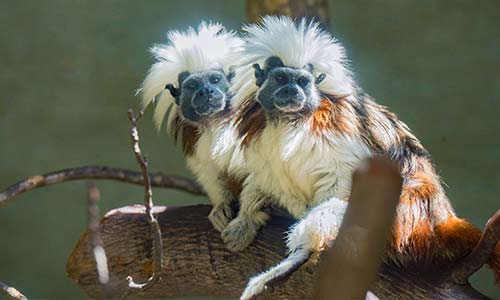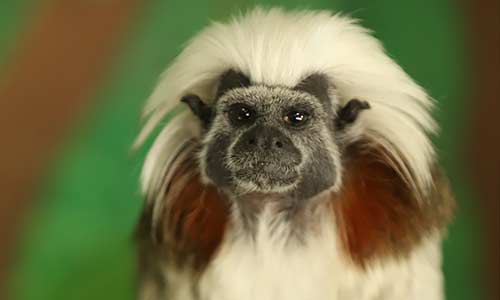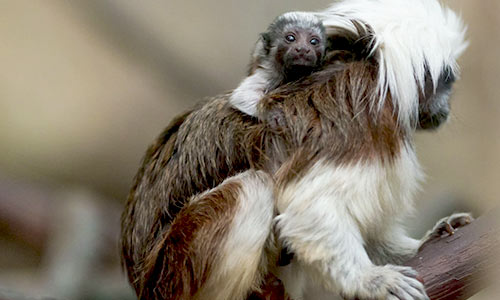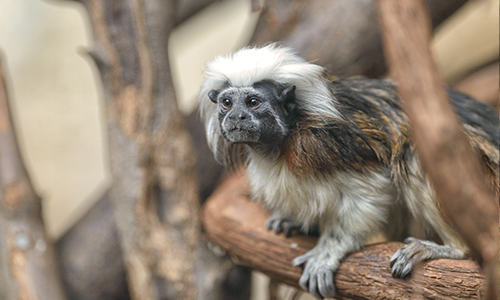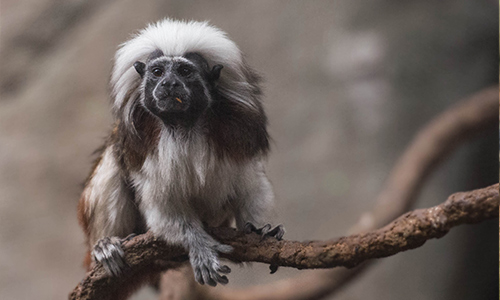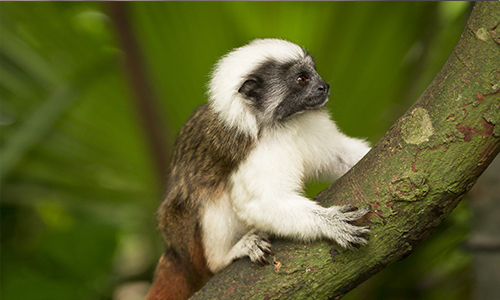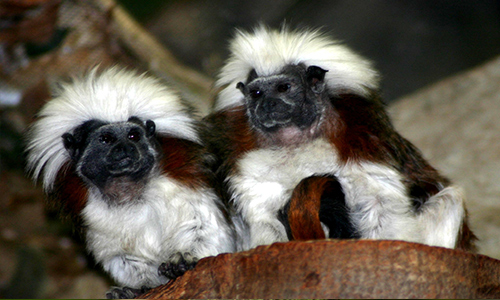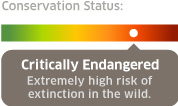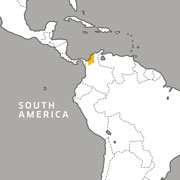Appearance:
The cotton-top tamarin's name comes from its long white-colored crests of hair that stems from forehead to nape and flows over its shoulders. Their backs are mostly black or brown, and the underparts of their bodies, arms and legs are predominantly white. The base of their tails are red-orange, with mostly black tips. Tamarins’ light weight allows them to reach food sources on outermost tree branches that are inaccessible to heavier primates. They use their tail for balance while climbing and jumping. They have very fine hair on their black-skinned faces, so their faces appear naked.
Size:
The adult tamarin typically weighs slightly less than one pound; it's about the size of a squirrel. Tamarins aren’t sexually dimorphic, meaning there’s no difference in size or appearance between males and females.
Diet:
Primarily insects and fruit. Tamarins act as seed dispersers and pollinators in tropical ecosystems.
Reproduction:
Tamarins breed monogamously. Adult “helpers” in the group don't mate; they instead care for the dominant pair’s offspring--this is called cooperative breeding. They reproduce seasonally, and females are pregnant or suckle young from January through June. Females have an estrous cycle of 15 days, and gestation lasts about 140 days. They deliver non-identical twins twice each year. Male tamarins reach sexual maturity at 24 months, and females at 18.
Behavior:
Tamarins live in groups of typically three to seven individuals, but up to 13. These groups consist of a dominant mated pair, their young, and a few subordinate or young. They’re territorial, using scent marks to define territory. Instead of physical contact when approaching other groups, tamarins will threaten the opposition with a territorial display of their rear and genitalia. They're extremely vigilant, always on the look-out for predators. While the group rests, one tamarin keeps watch and alerts others of danger.
Vocalizations include high-pitched trills, staccato calls, soft chirps and whistles.
Habitat/Range:
Understory and canopy of the tropical forests of Northwestern Colombia. Deforestation is the greatest threat to their survival. More than 3/4 of the tamarin's original habitat has been deforested.
Median Life Expectancy:
11.5 years
Predators:
The primary threat to this primate’s existence is habitat loss.

